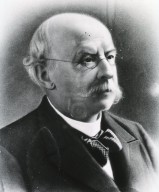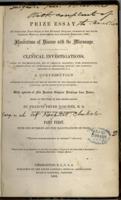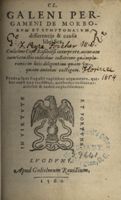Geometrical Ratio
Prices for medical books a few decades old were usually insignificant. When superseded, they had lost their value to current medicine. However, Billings' determination to acquire historical texts led him to a new problem. Some books were so old that their age and rarity made them difficult to obtain.
Just such a situation occurred when Charleston, South Carolina, physician and botanist Dr. Francis Peyre Porcher offered Billings eleven 16th-century versions of the writings of Hippocrates and Galen. Porcher believed that Billings' labor on the Library formed a "great and useful work" but still felt that, given his financial circumstances and the value of the books, he couldn't donate them. He asked Billings to name a price for them, saying he had no notion of their value, but that
The works of authors of the highest merit increase in value in a geometrical ratio in proportion as their date reaches back into the 16th century if the editions also are scarce.
Billings' offer in July 1872 evidently was unsatisfactory. Replying to the rejection, Billings told Porcher that he didn't "feel justified in paying more for books than I can buy them in E[urope] with a few [months] delay."
By October Porcher was willing to entertain another offer and sent the books to Billings for inspection.
Determined to maximize his budget, Billings sent Porcher a check for $175, saying he had consulted with Surgeon General Barnes and that it "is the utmost I can give and if you think it is not equal to the value of the books I will return them to you." Evidently resigned to what he thought was an inadequate price, Porcher accepted with a "pang of regret," saying he was "partially reconciled to their leaving my library only because they go into yours."
For Francis Peyre Porcher (1825-1895), botany was a family tradition. Porcher's great grandfather Thomas Walter was a pioneer South Carolina botanist. Porcher's cousin H. W. Ravenel's botanical research helped inform Porcher's compilation of medicinal plants in the South, which was intended to assist southern troops during the Civil War.
Items from the Surgeon Generals Library
Last Reviewed: February 8, 2024




